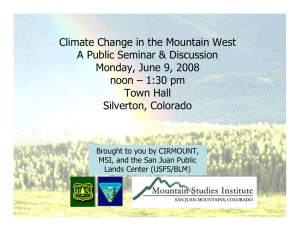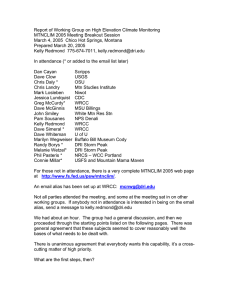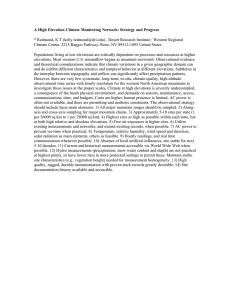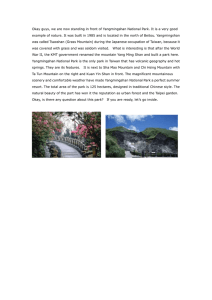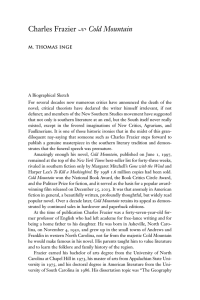IMPLEMENTATION OF MOUNTAIN CLIMATE NETWORKS al Climate Center ( )
advertisement
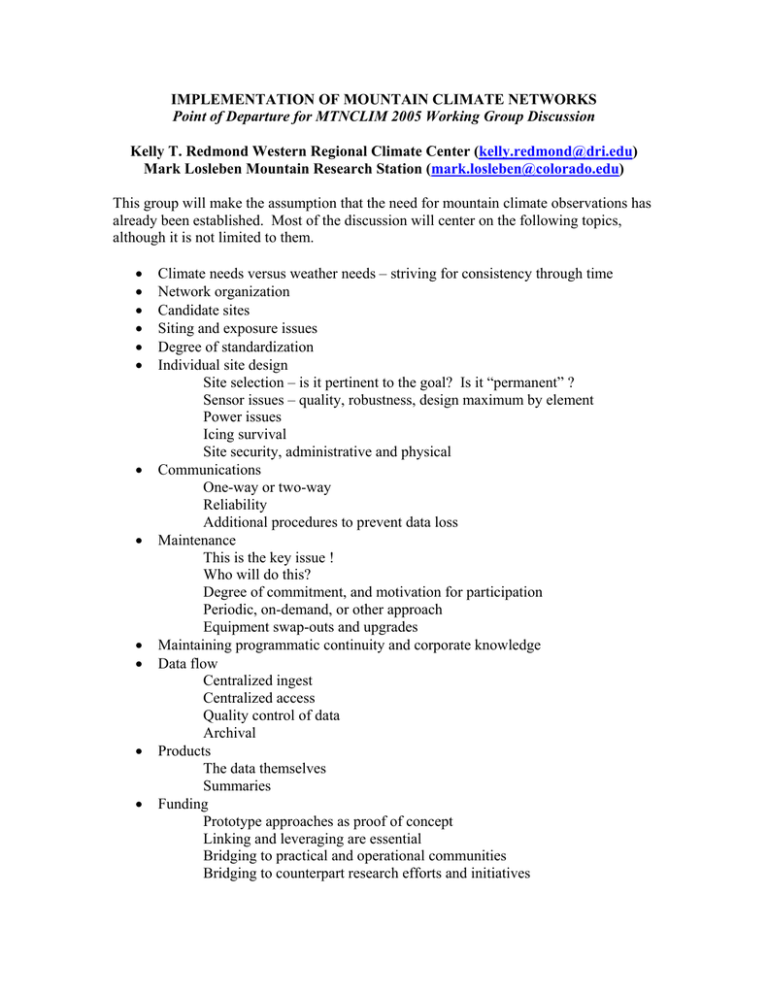
IMPLEMENTATION OF MOUNTAIN CLIMATE NETWORKS Point of Departure for MTNCLIM 2005 Working Group Discussion Kelly T. Redmond Western Regional Climate Center (kelly.redmond@dri.edu) Mark Losleben Mountain Research Station (mark.losleben@colorado.edu) This group will make the assumption that the need for mountain climate observations has already been established. Most of the discussion will center on the following topics, although it is not limited to them. • • • • • • • • • • • • Climate needs versus weather needs – striving for consistency through time Network organization Candidate sites Siting and exposure issues Degree of standardization Individual site design Site selection – is it pertinent to the goal? Is it “permanent” ? Sensor issues – quality, robustness, design maximum by element Power issues Icing survival Site security, administrative and physical Communications One-way or two-way Reliability Additional procedures to prevent data loss Maintenance This is the key issue ! Who will do this? Degree of commitment, and motivation for participation Periodic, on-demand, or other approach Equipment swap-outs and upgrades Maintaining programmatic continuity and corporate knowledge Data flow Centralized ingest Centralized access Quality control of data Archival Products The data themselves Summaries Funding Prototype approaches as proof of concept Linking and leveraging are essential Bridging to practical and operational communities Bridging to counterpart research efforts and initiatives A strategy to attain the monitoring goals involves these elements: 1. All major mountain ranges should be sampled. 2. Along-axis and cross-axis sampling for major mountain chains. 3. Approximately 5-10 sites per state (1 per 28000 - 56000 km2) 4. Highest sites as high as possible within each state, but at both high relative and absolute elevations. 5. Free air exposures at higher sites. 6. Utilize existing measurements and networks, and extend existing records, when possible. 7. AC power to prevent ice/rime when practical. 8. Temperature, relative humidity, wind speed and direction, solar radiation as main elements, others as feasible. 9. Hourly readings, and real-time communication whenever possible 10. Absence of local artificial influences, site stable for next 5-10 decades. 11. Current and historical measurements accessible via World Wide Web when possible. 12. Hydro measurements (precipitation, snow water content, and depth) not practical at highest points, so have lower sites in more protected settings to permit these. 13. Maintain stable site characteristics (e.g., vegetation height) needed for measurement homogeneity. 14. High quality, rugged, durable instrumentation with proven track records greatly desirable. 15. Site documentation history available and accessible.
